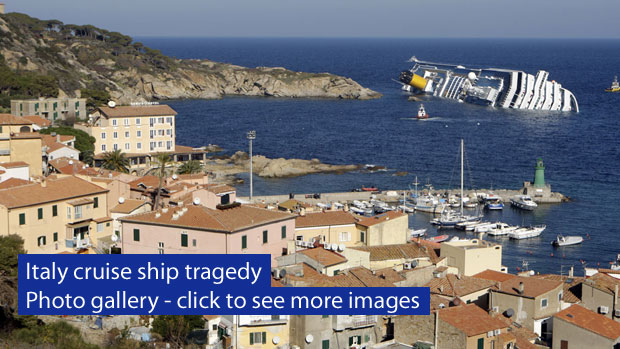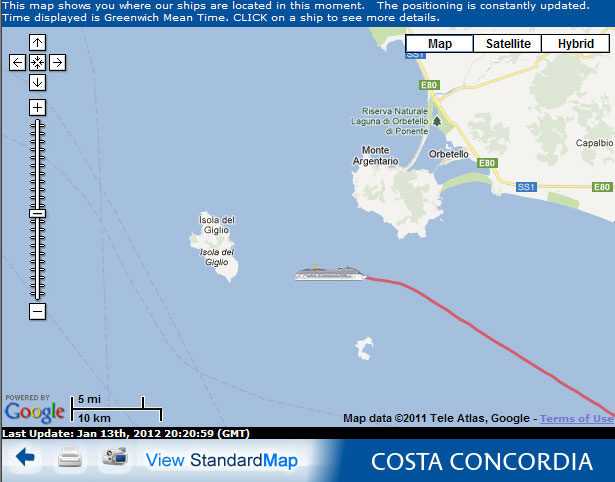Cruise ship runs aground off Italian coast
At least three people are dead after a cruise ship carrying 4,000 passengers and crew ran aground off the coast of Italy.
The large Italian cruise liner, the Costa Concordia, ran aground about 10pm on Friday evening off the island of Giglio on the western coast of Italy.
It is reported the 290 metre long ship hit a sandbar. A statement from the Italian coastguard says the ship took on water and was listing abut 20 degrees, but there was no danger of it sinking.
The ship carried 3,200 passengers and more than a 1,000 crew who were evacuated to a nearby island. Some people jumped into the sea and attempted to swim to the island some 400m away. Helicopters rescued the final 50 people from the decks of the ship.
Rescue teams als searched the ship cabin by cabin looking for people.
Three people have been confirmed dead, although Italian media suggestd six to eight people may have died. It is reported that a number of passengers are still unaccounted for.
A thousand of the passengers were Italian, with 500 Germans, 160 and a few dozen British people aboard.
Costa Cruises which owns the ship says it is still investigating the cause of the accident.
The Foreign Office has issued a number for anyone concerned about relatives aboard the ship: 0207 008 1500.

Click the image above to see the gallery
Pictures showed a massive gash in the hull more than 150ft long, with a huge rock embedded in the side of the ship towards the stern.
At least three bodies were retrieved from the sea, with at least three more feared dead, coastguard spokesman Francesco Paolillo said.
A map, dated 8pm on Friday night, from the Costa website shows the moment the cruise ship seemingly changed course and started veering towards the island. Subsequent maps show the ship changing direction once more before it struck land.

Those evacuated by helicopter were flown to Grosseto, while others, rescued by local ferries drafted in to help, took survivors to the port of Porto Santo Stefano on the nearby mainland.
The rescue operation is said to have involved five helicopters, from the coastguard, navy and air force.
Survivors far outnumbered Giglio’s 1,500 residents, and island Mayor Sergio Ortelli asked for “anyone with a roof” to open their homes to shelter the evacuees.
The evacuees were also taking refuge in schools, hotels, and a church on the tiny island.
Mr Paolillo said the exact circumstances of the accident were still unclear, but that the first alarm went off about 10.30pm, about three hours after the Concordia had begun its voyage from the port of Civitavecchia, en route to its first port of call, Savona, in north-western Italy.